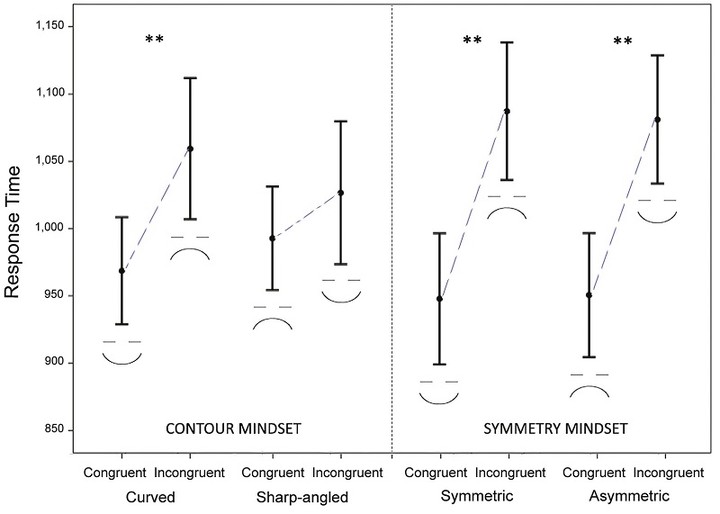When Symmetric and Curved Visual Contour Meet Intentional Instructions: Hedonic Value and Preference

Abstract
Symmetry and contour take part in shaping visual preference. However, less is known about their combined contribution to preference. We examined the hedonic tone and preference triggered by the interaction of symmetry and contour. Symmetric/curved, symmetric/sharp-angled, asymmetric/curved, and asymmetric/sharp-angled stimuli were presented in an implicit and explicit task. The implicit task consisted of an affective stimulus–response compatibility task where participants matched the stimuli with positive and negative valence response cues. The explicit task recorded liking ratings from the same stimuli. We used instructed mindset to induce participants to focus on symmetry or contour in different parts of the experimental session. We found an implicit compatibility of symmetry and curvature with positive hedonic tone. Explicit results showed preference for symmetry and curvature. In both tasks, symmetry and curvature showed a cumulative interaction, with a larger contribution of symmetry to the overall effect. While symmetric and asymmetric stimuli contributed to the implicit positive valence of symmetry, the effect of curvature was mainly caused by inclination towards curved contours rather than rejection of sharp-angled contours. We did not find any correlation between implicit and explicit measures, suggesting that they may involve different cognitive processing.